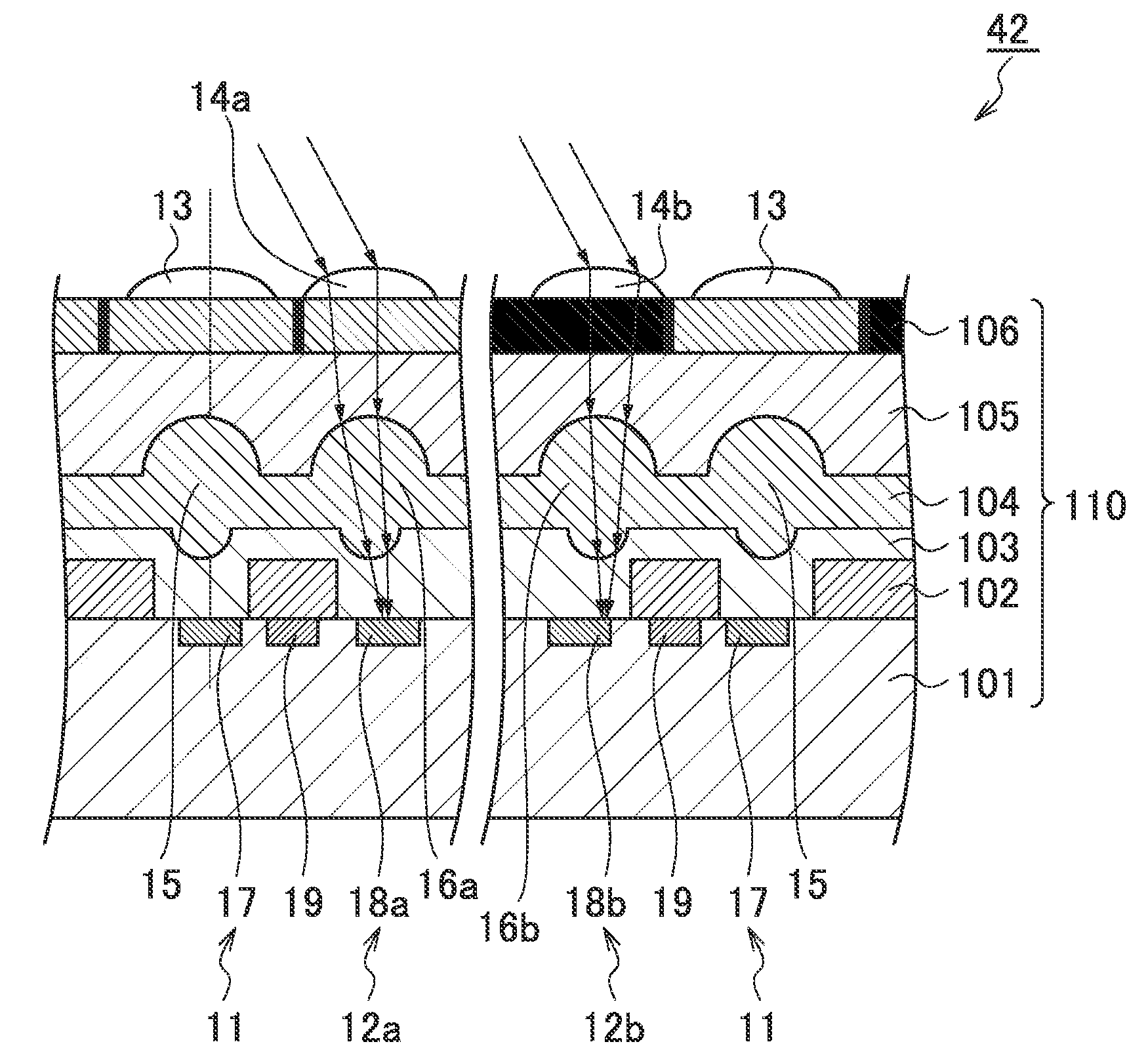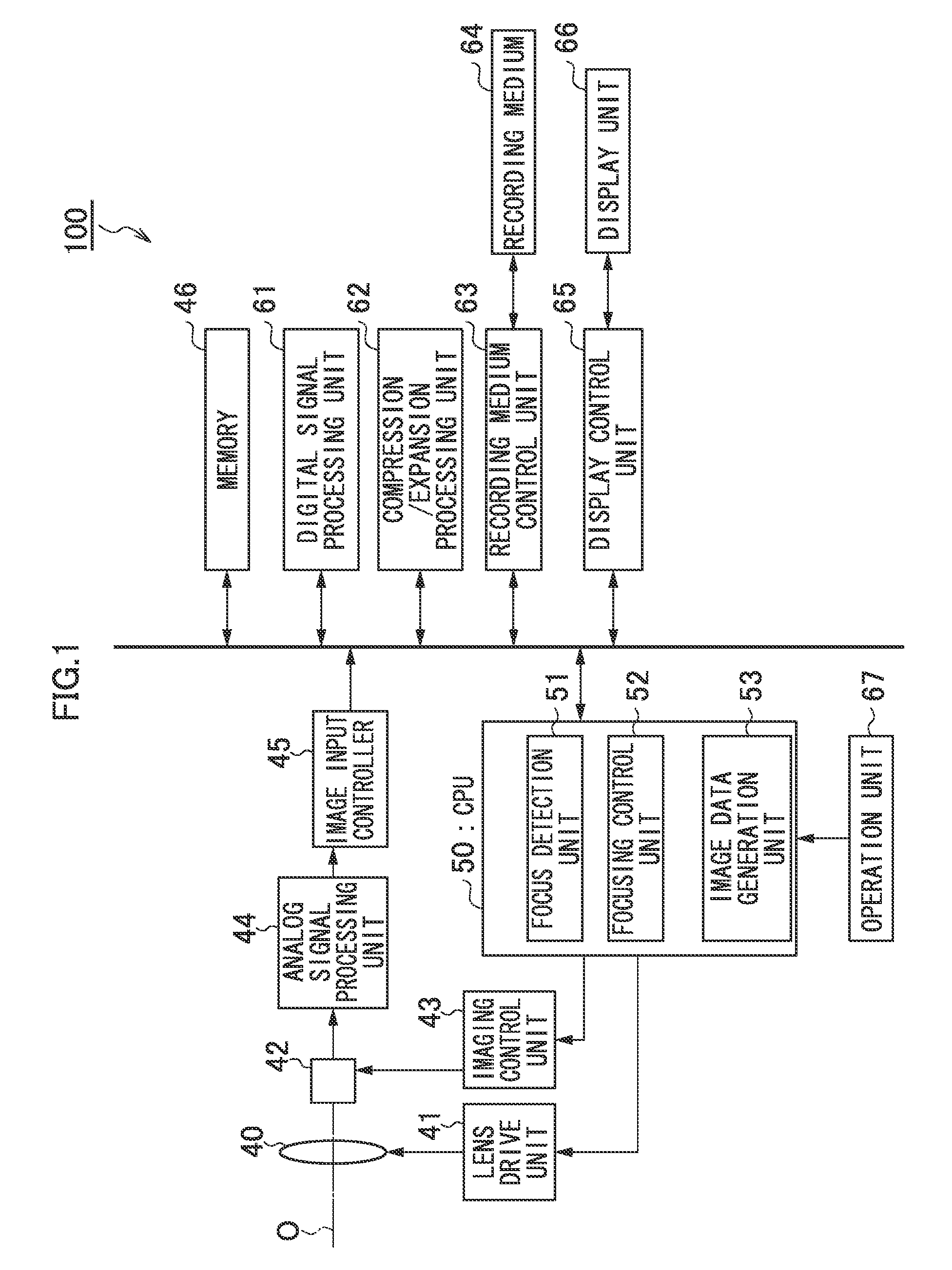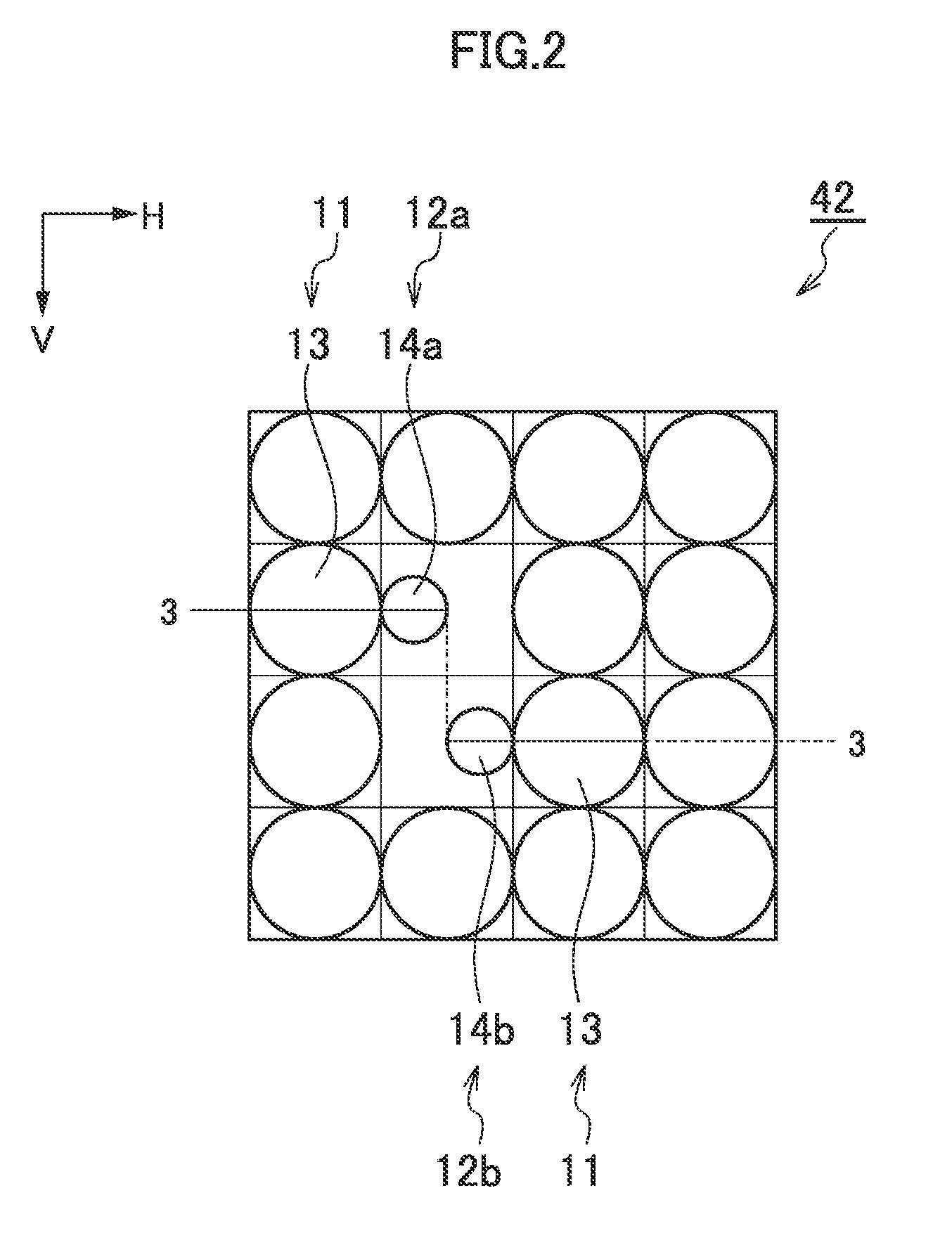Imaging device and electronic camera
a technology of electronic camera and imaging device, which is applied in the field of imaging device and electronic camera, can solve the problems of remarkable reduction of focus detection precision, increase of microlens focal length, and light incident amount, and achieve the effects of low cost, low cost, and high detection accuracy
- Summary
- Abstract
- Description
- Claims
- Application Information
AI Technical Summary
Benefits of technology
Problems solved by technology
Method used
Image
Examples
first embodiment
[0082]First, an imaging unit 42 will be described. Note that what has been described by referring to FIGS. 2 to 4 will be omitted here.
[0083]FIG. 5 is a sectional view illustrating a phase difference detection element 12 according to the first embodiment. As illustrated in FIG. 5, the phase difference detection element 12 according to the present embodiment is configured such that the optical axis (central axis) of the top microlens 14 is shifted from the optical axis (central axis) of the inner microlens 16. In addition, the optical axis of the inner microlens 16 is shifted from the optical axis of the photodiode 18. Further, the optical axis of the top microlens 14 is shifted from the optical axis of the photodiode 18.
[0084]The present embodiment is configured such that the optical axis of the top microlens 14 is shifted from the optical axis of the inner microlens 16. Thus, the photodiode 18 can efficiently receive object light passing through a partial region of the exit pupil ...
fourth embodiment
[0090]Next, an imaging unit 42 will be described. Note that what has been described by referring to FIGS. 2 to 4 will be omitted here.
[0091]FIG. 8 is a sectional view illustrating a phase difference detection element 12 according to the present embodiment. As illustrated in FIG. 8, the phase difference detection element 12 according to the present embodiment is configured such that the optical axis (central axis) of the entrance lens 161 of the inner microlens 16 is shifted from the optical axis (central axis) of the exit lens 162. The entrance lens 161 is a convex lens (upper convex lens) on an upstream side of the optical path, and the exit lens is a convex lens (lower convex lens) on a downstream side of the optical path.
[0092]Note that the present embodiment is further configured such that the optical axis of the top microlens 14 is shifted from the optical axis of the entrance lens 161 of the inner microlens 16. Furthermore, the optical axis of the entrance lens 161 of the inn...
sixth embodiment
[0098]FIG. 10 is a plan view illustrating an element arrangement of an imaging unit 42 according to a As illustrated in FIG. 10, in the present embodiment, phase difference detection element pairs 31 having a mutually adjacent first phase difference detection element 12a and second phase difference detection element 12b are arranged in an array pattern along the horizontal direction H which is a phase difference detection direction.
[0099]In FIG. 10, each of R, G, and B designates a color of the color filter. The photographic element 11 has a color filter of R (red), G (green) or B (blue), and the phase difference detection elements 12 (12a and 12b) has a color filter of G. In addition, three photographic elements 11 having a color filter of the same color (G in the present embodiment) are arranged adjacent to each phase difference detection element 12. One (e.g., 11a) of the photographic elements 11 is located between the phase difference detection element pairs 31. For example, th...
PUM
 Login to View More
Login to View More Abstract
Description
Claims
Application Information
 Login to View More
Login to View More - R&D
- Intellectual Property
- Life Sciences
- Materials
- Tech Scout
- Unparalleled Data Quality
- Higher Quality Content
- 60% Fewer Hallucinations
Browse by: Latest US Patents, China's latest patents, Technical Efficacy Thesaurus, Application Domain, Technology Topic, Popular Technical Reports.
© 2025 PatSnap. All rights reserved.Legal|Privacy policy|Modern Slavery Act Transparency Statement|Sitemap|About US| Contact US: help@patsnap.com



